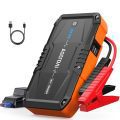We know how it feels to see that pesky check engine light and not have a clue what’s causing it. Believe us, you’re not alone in this boat. Not everyone has the luxury of owning an OBD-2 scanner, which is pretty much essential for diagnosing modern vehicles like the Chevy Silverado.
Through our guide, we’ll share some straightforward steps on how to tap into your GM car’s onboard diagnostics system and read those baffling OBD2 codes without needing a scanner. It’s time to uncover those mysteries under the hood with ease.
Key Takeaways
- You can find out what’s wrong with your GM car without a scanner. Use the ignition key, press the odometer reset, or a paperclip.
- Watch dashboard lights after using these methods to see codes. They tell you about different issues.
- Write down blink patterns or numbers from the dashboard. Match them to code charts online or in manuals.
- If DIY methods don’t fix the check engine light, get help from an ASE Certified mechanic.
- Auto parts stores might scan your car for free and offer more info on problems.
Understanding OBD2 Codes
Let’s talk about OBD2 codes. These codes are essential tools for figuring out what’s wrong with a car. Each code signals a different problem in your vehicle’s engine, transmission, or emissions system.
A solid yellow or orange light means something minor is off. But if you see a solid red or flashing light on the dashboard, it’s serious and needs quick attention.

OBD2 ports are where you plug in scanners to read these codes. You’ll usually find the port on the driver’s side under the dashboard. Using an OBC-2 scanner is simple and effective for reading these diagnostic trouble codes.
The color and presence of the check engine light give us clues about how bad a problem might be right away.
A check engine light can signal issues in the car’s power train, engine, transmission, or emissions system.
Methods to Retrieve GM OBD2 Codes Without a Scanner
We can pull up GM OBD2 codes without a scanner in simple ways. This includes using the ignition key or a paperclip and pressing the odometer reset.
Using the Ignition Key Method

We often find ourselves needing to check our vehicle’s health but lack the tools. The ignition key method offers a straightforward solution for GM vehicles without using a scanner.
- Sit in the driver’s seat, making sure all car systems are off.
- Insert the key into the ignition.
- Turn the key “on” and “off” three to five times quickly, stopping with it in the “on” position.
- Watch for warning lights on your dashboard to light up, indicating power is on.
- Notice all lights should turn off after a moment, except for the check engine light.
- Observe if any diagnostic trouble codes appear in your odometer’s display area.
- If codes do not show on the odometer, watch the check engine light closely.
- Count how many times it flashes; this represents different trouble codes based on pulse patterns.
- Write down these pulses and pauses carefully.
- Use this information to identify specific vehicle issues by consulting a code chart or manual.
With this method, we can quickly assess our car’s condition without sophisticated equipment, ensuring we stay informed about its maintenance needs and when to seek professional help if necessary.
Utilizing the Odometer Reset Function
We can retrieve GM OBD2 codes without a scanner using the odometer reset function. This method involves simple steps and tools found in the vehicle.
- Locate the odometer reset button on the dashboard.
- Get into the car and close all doors to ensure no interruptions during the process.
- Press and hold the odometer reset button.
- While holding the button, turn the ignition key to the “on” position but do not start the car.
- Look at the odometer display for diagnostic trouble codes that will appear one after another.
- Jot down each diagnostic trouble code displayed on the odometer for reference.
- Compare these codes with a list from a service manual or online resource to identify car issues.
- Reset the system by turning off the ignition if needed and repeat if you missed any code.
This method allows us to quickly check for any issues indicated by diagnostic trouble codes without needing specialized tools or visits to a mechanic for an initial diagnosis.

Employing a Paperclip for Diagnostic Trouble Codes
Retrieving GM OBD2 codes doesn’t always require a scanner. We can use simple items like a paperclip to get these codes.
- First, ensure the car is off to avoid any electrical issues.
- Locate the OBD port under the steering wheel, crucial for connecting to the car’s diagnostics system.
- Take a sturdy paperclip and bend it into a U shape. This improvised tool will be our method for accessing trouble codes.
- Pinpoint the two terminals that need to be connected within the OBD port. These are usually marked and found in the car’s manual.
- Carefully insert one end of the paperclip into each of these terminals, creating a closed circuit. It’s important not to force it as we don’t want to damage the port.
- With the paperclip secure, turn the ignition key to the “on” position without starting the engine. This action powers up only the electrical system.
- Watch the dashboard’s check engine light closely. It will blink in a sequence indicating different codes based on its pattern of flashes and pauses.
- Count these blinking lights accurately. The sequence consists of long and short flashes, each representing part of a code that specifies the exact issues.
- Refer to a diagnostic trouble code (DTC) chart available online or in a service manual made for your vehicle model. Match your counted sequence with this chart to interpret the possible issue your car might be experiencing.
This technique lets us car enthusiasts diagnose problems swiftly without the need for advanced tools. While not being as precise as using an actual scanner, it provides us with an excellent foundation for further exploration or repair requirements.
When to Seek Professional Help
Sometimes, our efforts to figure out the problem with our car using OBD2 codes might not cut it. This is especially true if the check engine light stays on after we’ve tried to fix it ourselves.

In these cases, getting help from an ASE Certified mechanic or a repair shop can make a big difference. They have the tools and knowledge to find out what’s really wrong and how to fix it.
Visiting an auto part store might also be a good move since some offer free scans that can give us more insight into our vehicle’s issues. Ignoring warning signs like the check engine light could lead us down a road filled with costly repairs.
For those of us who want extra peace of mind, looking into an extended warranty or auto protection plan, such as those offered by Endurance Warranty, could save us from unexpected expenses.
These plans come packed with benefits including 24/7 roadside assistance and coverage for key fob replacements among others.
Now let’s explore how you can use specific methods effectively to retrieve GM OBD2 codes without needing professional equipment.
Conclusion
Retrieving GM OBD2 codes without a scanner is straightforward. We explored methods like using the ignition key, employing the odometer reset function, and paperclips for diagnosing trouble codes.
These steps ensure owners can understand their car’s health easily. If these approaches do not clear up the issues, seeking help from professionals remains a smart move. Keeping your vehicle in top condition optimizes performance and safety on the road.
FAQs
1. What is the OBD system and how does it relate to vehicle diagnostics?
The Onboard Diagnostics (OBD) system, including OBD I and OBD II versions, provides critical information about a vehicle’s performance. It generates Diagnostic Trouble Codes when issues arise.
2. How can one retrieve GM OBD2 codes without a scanner?
Retrieving GM OBD2 codes without a scanner involves using specific methods that vary based on the model and Vehicle Identification Number (VIN). Detailed instructions are usually available via email or online resources.
3. Can this method work for all vehicles like Tesla or those in the grey market?
This method primarily works for General Motors vehicles with an onboard diagnostic system. For other brands like Tesla or grey market cars, procedures might differ depending on their unique VIN and systems.
4. Do these codes provide information about specific parts such as catalytic converters?
Yes, these diagnostic trouble codes can indicate issues with various components of your vehicle including crucial ones like catalytic converters.





